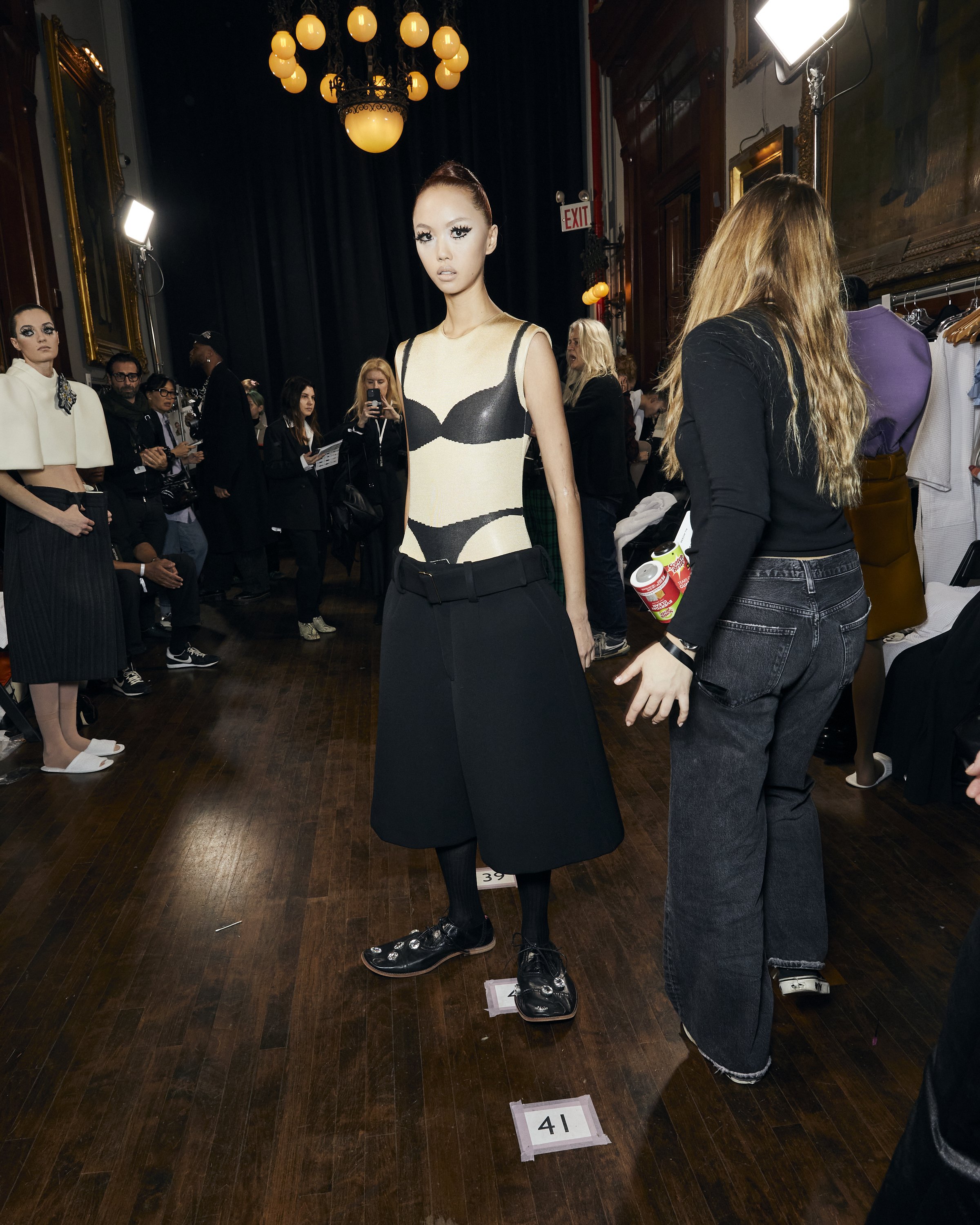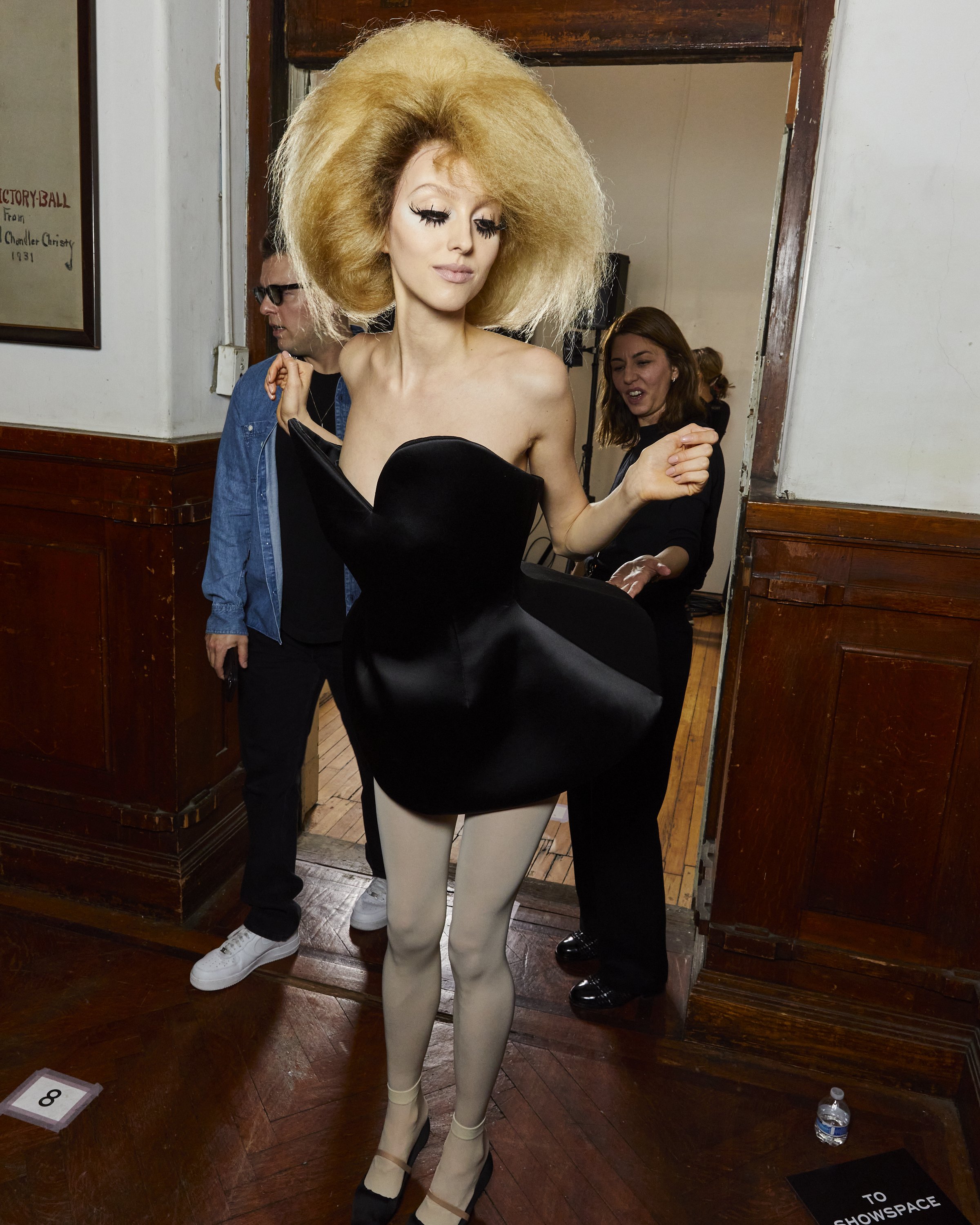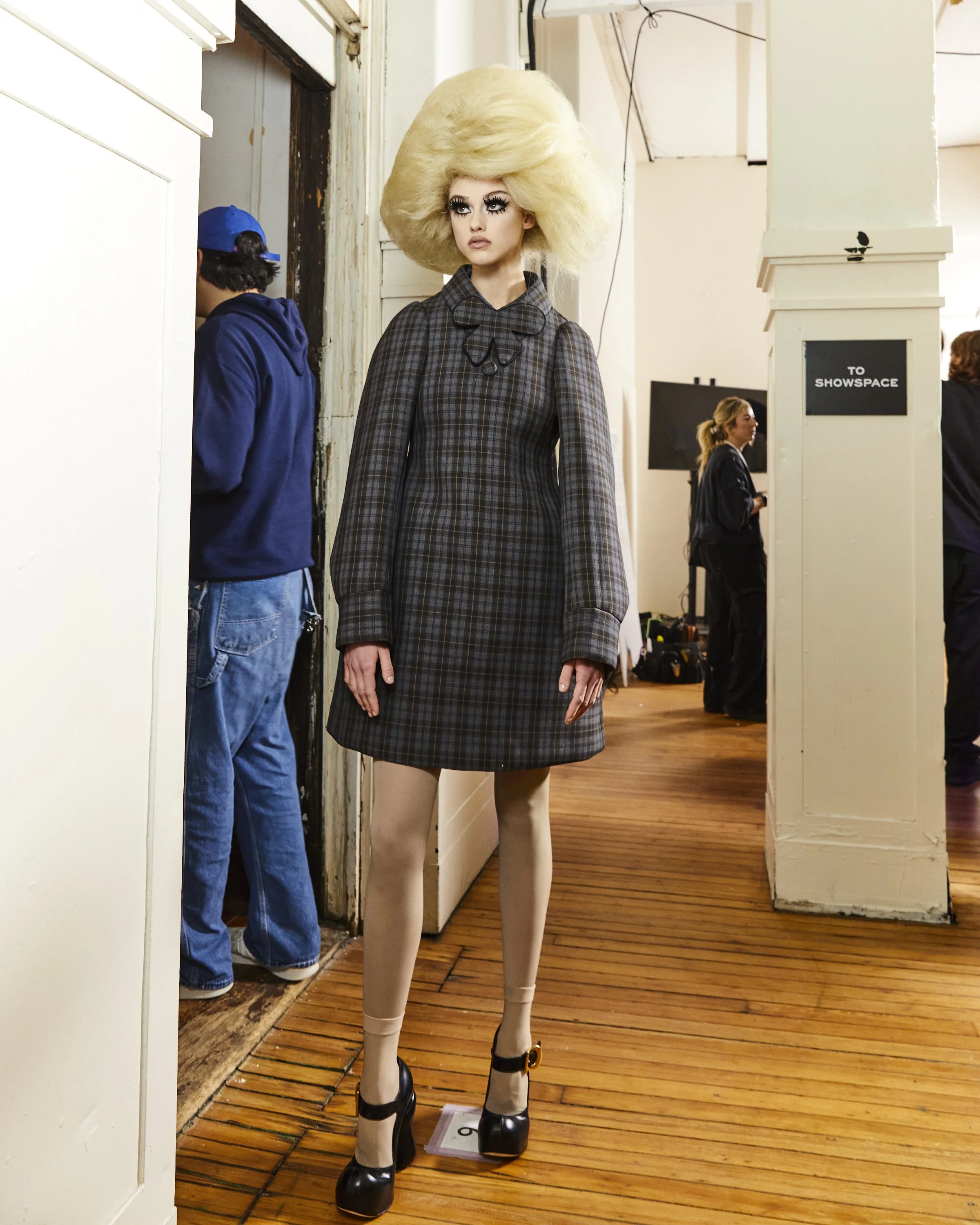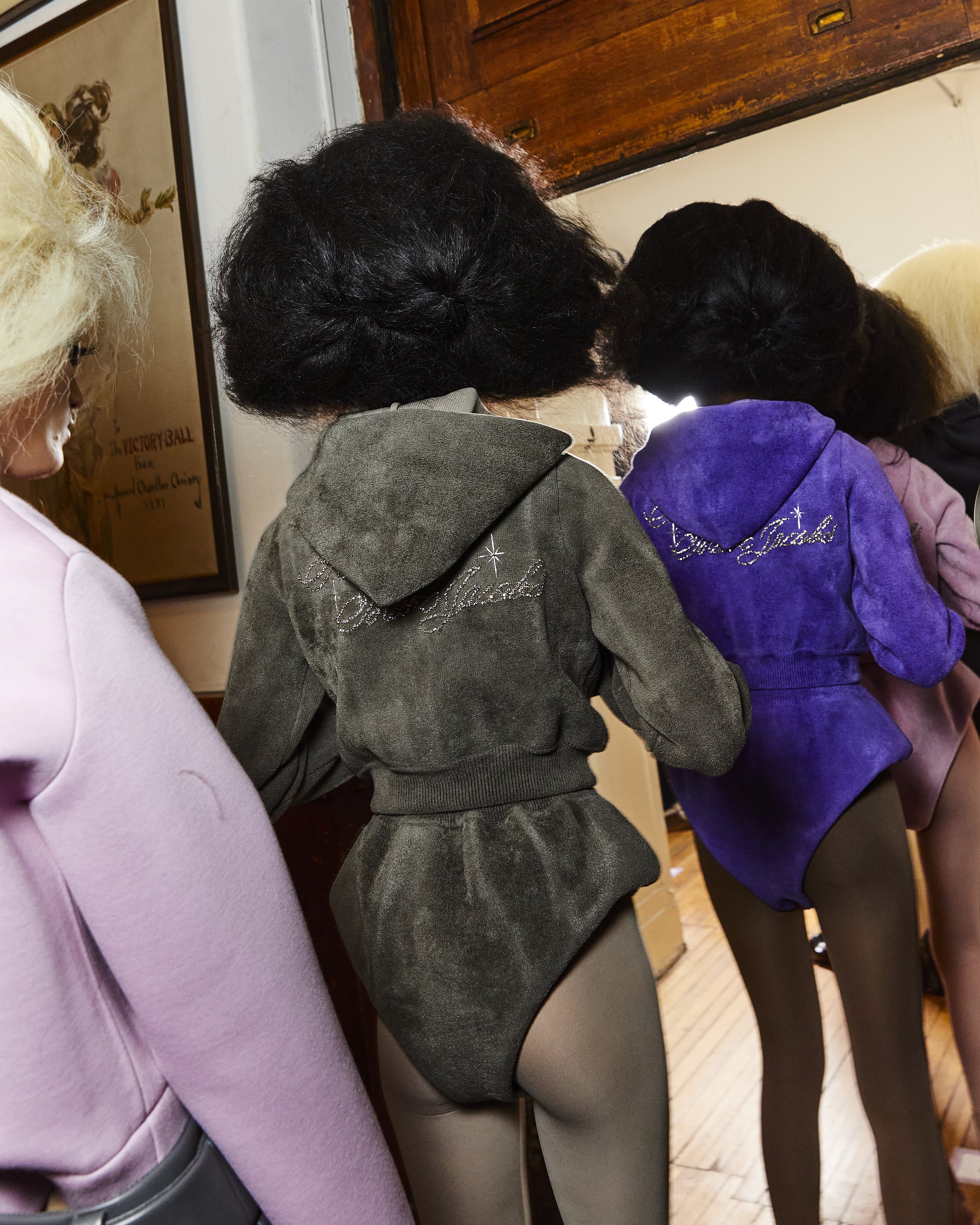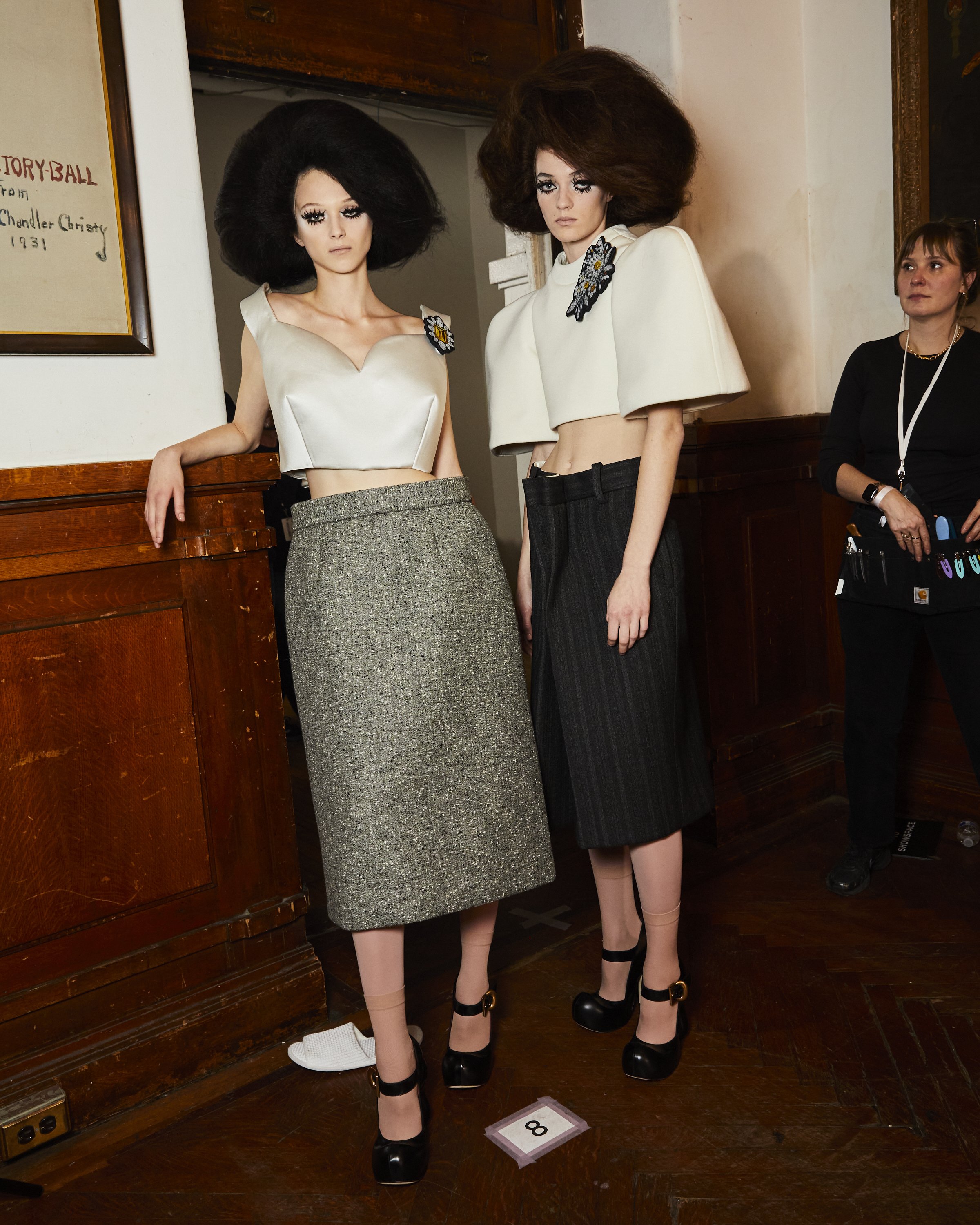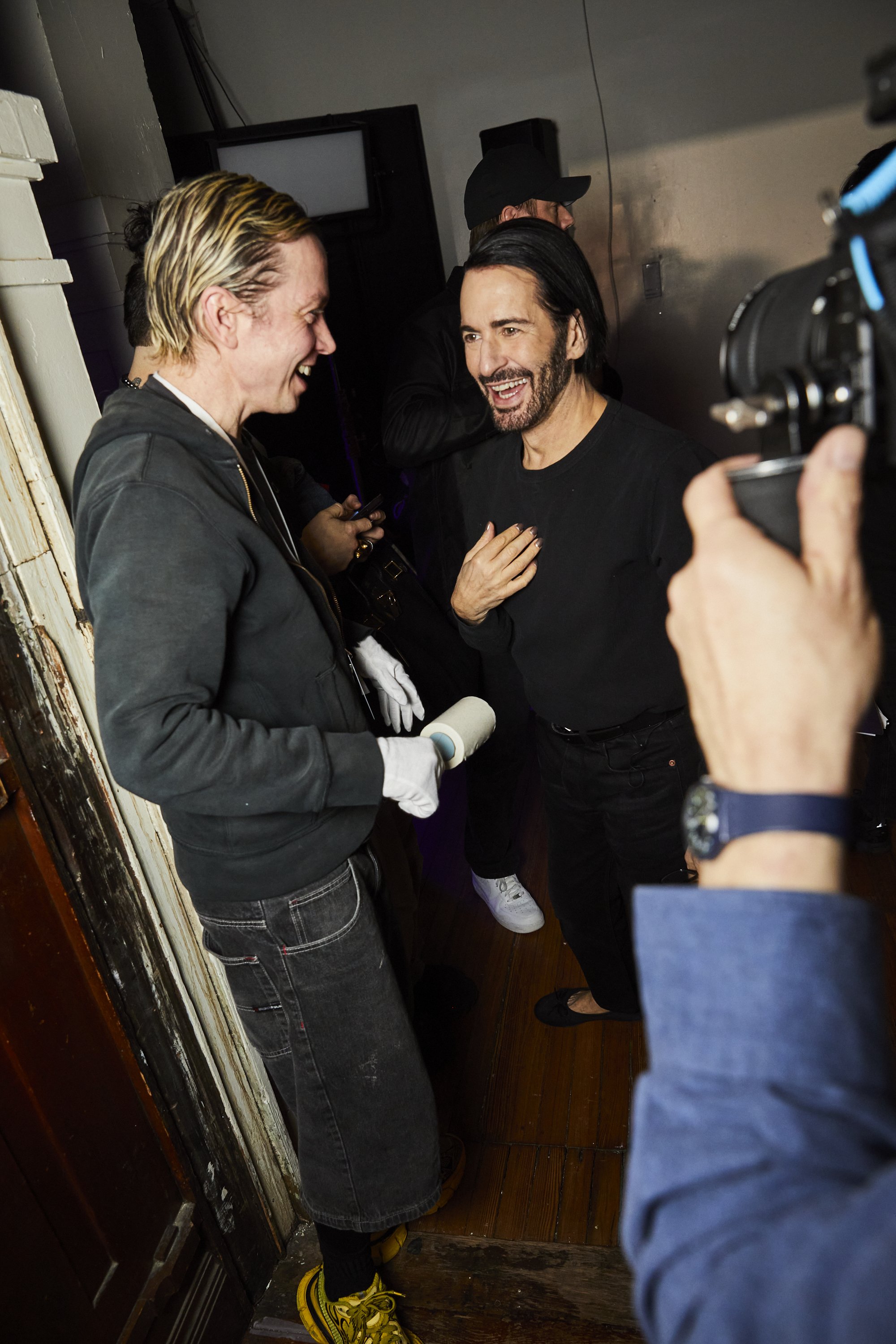Marc Jacobs’ 40th Anniversary Collection.
In the show notes for his 40th anniversary collection, Marc Jacobs described wanting to explore a “disorienting familiarity” to “express something naive and elegant.” In an uncanny blend of reality and fantasy, the clothes shared the stiff, large, and boxy proportions of those “worn” by paper dolls, upon which countless different outfits can be layered and replaced with incomparable speed and ease. On look 26, the sleeves were cut shorter in the front than in the back, creating a reverse trompe l'oeil effect wherein a three dimensional sweater was made to appear totally flat when viewed straight on. A gigantic Robert Therrien sculpture of a beige folding table and chairs in the vast, conspicuously sparse Park Avenue Armoury immediately placed the audience in the world of dioramas and dollhouses, miniatures and imagination.
Style-wise, there was a sense of temporal progression from mid-century Manhattan socialites up through 2000s pink velour. But the looks I’ve been reflecting on the most belonged to the coterie of petulant youths in stiff sweatshirts that pulled their shoulders forward, trudging with their arms dangling in front of them like children forced to appear before their parents' friends, determined to retain a sour expression throughout. Lulu Tenney, look 22, wore an anomalously bright scarlet sweatshirt and gigantic brown shorts, distinguished by her outfit’s vivid color and boyish fit. When I saw her adjust her hair (one of many voluminously coiffed wigs designed by hairstylist Duffy) on the runway as she passed by my seat to prevent it from slipping off, it appeared less as her deftly resolving a technical gaffe than an apt expression of character. This was not the look I’d necessarily most easily see myself in (for day-to-day, I’d be more inclined toward the heavy knitwear of look number 7, modeled by Alex Consani, or, for fun, look 39, a short black dress where the bottom curves upward in a playful grin), but I remember it well because I believe it serves as a sort of key to interpreting the rest of the collection. The more youthful and naive ensembles made me especially attentive to a story being told about time, memory, transformation, and curiosity. Would all of the young girls in cartoonishly large, shiny shorts one day become those same women wearing black, gold, and navy evening gowns?
As much as the models resembled paper dolls, they also resemble children dressing up in their mothers’ closets, wearing clothes a little too big, a little too stiff, equally proud and shy, “naive and elegant.” Elsewhere in the show notes, Jacobs meditated on wonder “through the unavoidable lens of time”, quoting Robert Therrien thus: “The further back I can trace something as being meaningful to me in some way or another...the more I am attracted to it.” Rather than cataloging nostalgic signifiers in an auto-cannibalistic collage, Jacobs sought to remind us of the constant possibility that what we once thought familiar may suddenly become curious and strange again, without notice. It was a show about the allure of what we only half understand, and the realization that halfway is perhaps the closest we can ever really come to fully understanding anything. At most shows, the lights go darker to signal the start and return to full brightness when the fantasy ends. At Marc Jacobs’ fortieth anniversary, we entered in the dark and returned to it after playtime was over. The real world remained a shadowed mystery, briefly illuminated by wonder.
